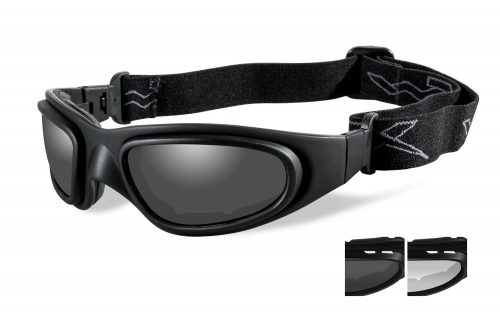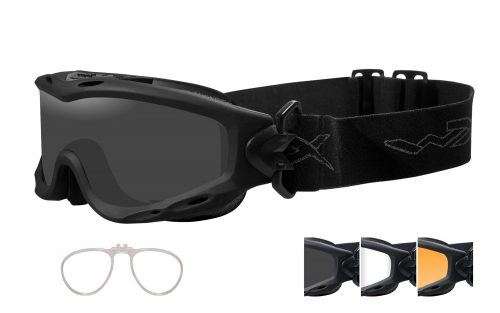Members of the military and civilians who go hunting or shooting should wear tactical goggles. This eyewear provides protection during activities that pose a risk of eye injury due to impact. The right eye protection can prevent many injuries. Learn more about the features of goggles designed for tactical applications.
Tactical Eye Protection
Certain styles of goggles are designed and tested to stand up to the challenges of action in the field. Frames and lenses should be impact rated with at least an American National Standards Institute Z87.1 high mass impact and velocity rating. Depending on when and where goggles will be worn, this eyewear may also need to meet military standards for ballistic protection.
Most goggles feature adjustable straps and cushioned contact points for a close and comfortable fit. Lenses may be clear or tinted to reduce glare and enhance optical clarity and contrast. The frames should be properly sized so that padding is flush to the face and lenses align with the optical center. The dimensions of goggles should correspond to the wearer’s face for the best fit. Pupillary distance is particularly important for prescription tactical goggles, as the shape of lenses is more likely to cause distortion if eyewear does not fit properly.
Ballistic and Military Goggles
Goggles intended for wear in the field should meet U.S. military standards for ballistic protection such as the U.S. Military MIL-PRF-32432 ballistic fragmentation standard and the MIL-DTL-43511D standard for goggles. Testing requirements for tactical ballistic goggles surpass the ANSI Z87.1 standard.
Military tactical goggles are tested with projectiles moving at approximately 550 feet per second. The ANSI high mass impact and velocity testing involves striking eyewear with a projectile moving at 150 feet per second. Research has shown that more eye injuries in the field are caused by high-energy projectiles and improvised explosive devices than gunshots. The level of eye protection provided by goggles that meet military standards greatly exceeds the highest-rated civilian styles.
Tactical Goggles FAQs
When are goggles better than glasses?
Goggles may be a better choice for high impact or intense activities. This style of eyewear provides more protection from impact and ultraviolet rays, hazards that could enter around the sides of glasses. The fit of goggles is reinforced by straps and a seal made of material such as foam.
How can I tell if goggles have a ballistic rating?
The Military Ballistic Standard for goggles is MIL-DTL-43511D. Check the description of eyewear to determine whether a particular brand and style of goggles meets the requirements for this standard. Approved tactical ballistic eyewear designs are also specified in the Authorized Protective Eyewear List for members of the U.S. military.
How do goggles protect eyes from hazards?
Tactical goggles that have ANSI Z87 or military ballistic ratings are tested by being struck with high-speed projectiles. This style of eyewear protects the entire eye by preventing impact from any direction and keeping out splash hazards and dust. Customize goggles with prescription lenses or wear over other corrective eyewear.
Are goggles compatible with any prescription?
Depending on the goggles, corrective lenses may be available in step diopters or made to the specifications of a particular prescription. Check the available lens options for any brand and style. If you require a powerful prescription, look for high RX goggles that provide sufficient vision correction without causing distortion.
Do tactical goggles meet military standards?
Check the Authorized Protective Eyewear List maintained by PEO Soldier to determine which goggles are approved for military use. Military-rated goggles should meet the ballistic impact standards set forth in MIL-PRF-32432 and MIL-DTL-43511D. Eyewear intended for military use should also satisfy the highest standards for clarity, durability, fit and functionality.

